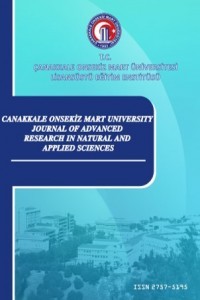Çoklu Bir Yıldız Sistemi: IU Aurigae
Çoklu sistem, dönem analizi, kütle çekim dalgaları, IU Aur.
A Multiple Star System: IU Aurigae
multiple system, period analysis, gravitational waves, IU Aur.,
___
- Eaton, J. A., 1978. A study of the light curves of the early-type close binary systems IU Aur and V Puppis. Acta Astronomica, 28; 63.
- Irwin, J. B., 1952. The Determination of a Light - Time Orbit. Astrophysical Journal, 116; 211.
- Irwin, J. B., 1959. Standard light - time curves. Astrophysical Journal, 64; 149.
- Liu, X., Leung, K.C., Tan, H., 1988.Photometric study of the eclipsing binary IU Aurigae.
- Chinese Astronomy and Astrophysics Vol. 12; 298-303.
- Mammano, A., Margoni, R., Stagni, R., 1977. The massive triple system IU Aurigae. Astronomy and Astrophysics, 59; 9-17.
- Mayer, P., 1965. Preliminary Data on the Eclipsing Variable HD 35652. Publications of the astronomical Society of the Pacific, 77; 436.
- Mayer, P., Drechsel, H., 1987. Up-to-date parameters of the eclipsing triple system IU AUR. Astronomy and Astrophysics, 183; 61-65.
- Mayer, P., Wolf, M., Tremko, J., Niarchos, P.G., 1991. New times of minima and ephemris for several early-type eclipsing binaries. Astronomical Institutes of Czechoslovakia, 42; 225.
- Ohmori, S., 1989. BV Observations of IU Aurigae, Information Bulletin on Variable Stars 3333.
- Özdemir, S., Mayer, P., Drechsel, H., Demircan, O., Ak, H., 2003. Refinement of third body parameters and new photometric results fort he early-type multiple system IU Aurigae. A&A 403; 675-681.
- Paschke, A., Brát, L., 2006. O - C Gateway, a Collection of Minima Timings. Open European Journal on Variable Star, 23; 13.
- Zasche, P., Liakos, A., Niarchos, P., et al., 2009. Period changes in six contanct binaries: WZ And, V803 Aql, DF Hya, PY Lyr, FZ Ori and AH Tau. New Astronomy, 14; 121-128.
- Yayın Aralığı: Yılda 4 Sayı
- Başlangıç: 2015
- Yayıncı: Çanakkale Onsekiz Mart Üniversitesi
Pirinç ve Pirinç Yan Ürünlerinin Glutensiz Tahıl Ürünlerinde Kullanımı
Melike ÖZER, Necati Barış TUNCEL
EZ HYDRAE Sisteminin Yörünge Değişim Analizi
Çoklu Bir Yıldız Sistemi: IU Aurigae
Erkan YILAN, İbrahim BULUT, Osman DEMİRCAN
Kalp Hastaları İçin Bulut Bilişim Temelli Erken Uyarı Sistemi
